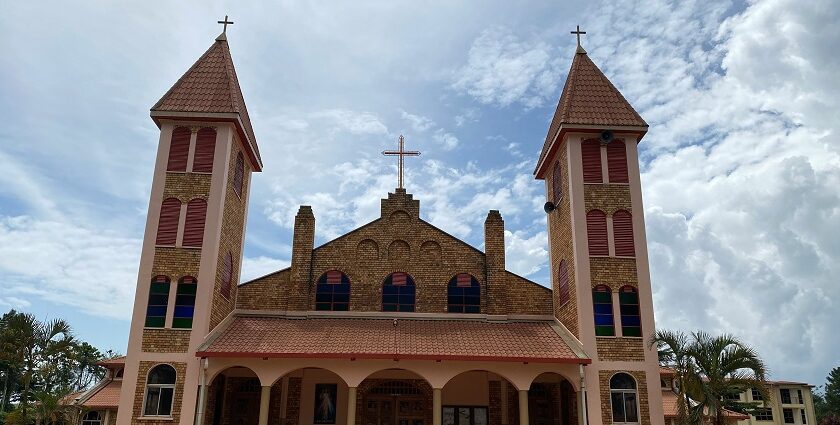Among the most striking things to do in Gondar Ethiopia, is walking through stone-walled castles that once served as royal seats of power. The city still holds on to its past, not behind glass, but out in the open. You’ll find painted ceilings inside hillside churches, bustling local markets, and quiet corners where time has barely moved. Gondar is layered, lived-in, and filled with places where history is part of daily life. If you’re curious about Ethiopia’s imperial era, this is where it comes into view.
Top Things To Do In Gondar Ethiopia
Explore stone castles, painted churches, and markets—essential things to do in Gondar Ethiopia, blending history, faith, and tradition.
1. Explore Fasil Ghebbi
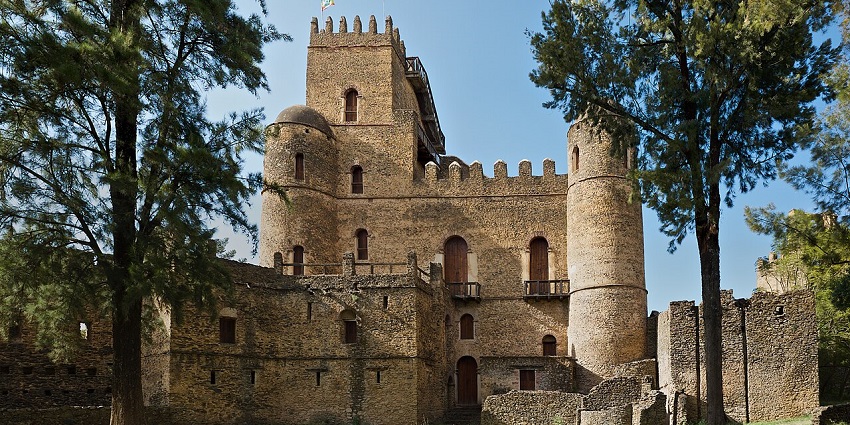
Photo: Ludger Heide / Wikimedia Commons
Fasil Ghebbi should be at the top of your list when looking for things to do in Gondar, Ethiopia. The compound once served as the political and ceremonial centre of Ethiopia’s empire. Emperors held court here, managed affairs of state, and commissioned new buildings across the grounds. Most of the structures were built between the early 1600s and late 1700s, starting with Emperor Fasilides. His castle, still standing, was the first to be built and remains the most prominent among the group. His structure stands out with its rounded towers, high balconies, and strong stone walls.
Location: Centre of Gondar
Cost: 200 ETB / ₹125 for foreigners & 50 ETB / ₹30 for locals
Nearby Attractions: Debre Berhan Selassie Church, Fasilides Bath
2. Visit Debre Berhan Selassie Church
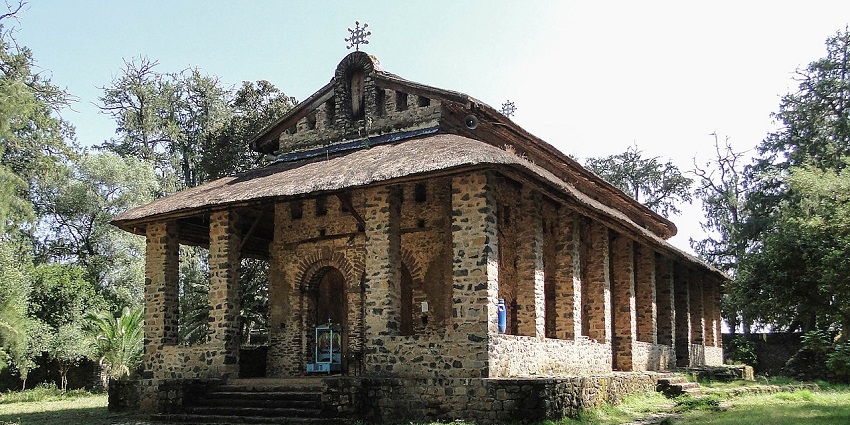
Photo: Bernard Gagnon / Wikimedia Commons
Among the most meaningful things to see in Gondar Ethiopia, is visiting Debre Berhan Selassie Church, located a short climb from the Royal Enclosure. The structure was completed in the late 18th century during the reign of Emperor Eyasu II. Its interior artwork is preserved without damage and has made it one of the most respected religious sites in the country. The ceiling stands out immediately with rows of cherubs, whose wide eyes cover the wooden panels from end to end. Each wall is filled with scenes from the Bible, painted using natural pigments that still hold their original tones.
Location: North of Fasil Ghebbi, Gondar
Cost: 100 ETB / ₹62
Nearby Attractions: Fasil Ghebbi, Kuskuam Complex
3. Stroll Through Fasilides Bath
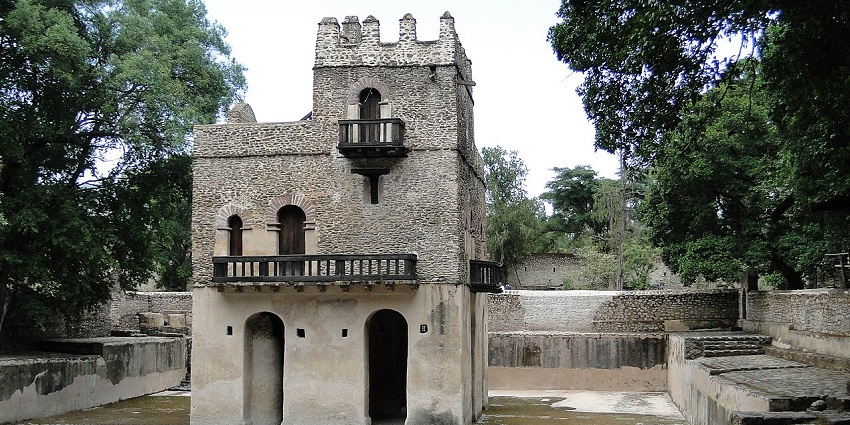
Photo: Bernard Gagnon / Wikimedia Commons
Fasilides’ Bath, a large sunken pool surrounded by stone walls and shaded by old fig trees. It was built in the 17th century during Emperor Fasilides’ reign; the site likely served both ceremonial and personal use within the royal court. Water flows into the pool through a network of canals from nearby streams, though it remains empty for most of the year. Each January during the Timkat festival, it is filled, blessed, and used for religious reenactments of the baptism of Christ, drawing huge local crowds.
Location: Southwest of Fasil Ghebbi
Cost: 100 ETB / ₹62
Nearby Attractions: Royal Enclosure, Qusquam Palace
4. Discover Kuskuam Complex
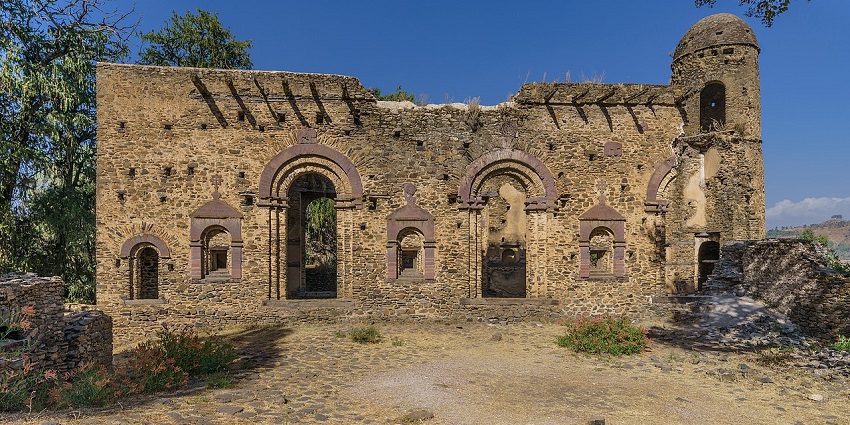
Photo: A.Savin / Wikimedia Commons
If you are exploring historical places, the Kuskuam Complex offers a quieter but equally important chapter in the city’s imperial story. This site was developed by Empress Mentewab in the early 18th century after the death of her husband, Emperor Bakaffa. She chose to build her residence and a church here, away from the formal power centre at Fasil Ghebbi. The palace ruins still stand, with thick stone walls and visible outlines of reception rooms, staircases, and private quarters. Next to it, the Kuskuam Maryam Church contains her tomb, along with those of her son and grandson.
Location: Outskirts of Gondar, 3 km west
Cost: 50 ETB / ₹30
Nearby Attractions: Debre Berhan Selassie Church
5. Hike To Simien Mountains National Park
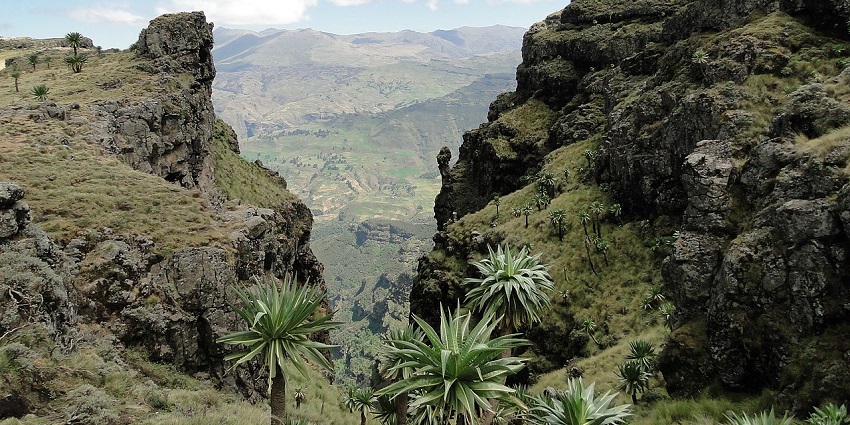
Photo: Bernard Gagnon / Wikimedia Commons
One of the essential experiences when thinking about what to do in Gondar Ethiopia is to hike into the Simien Mountains with a licensed guide. The landscape rises sharply, shaped by cliffs and deep rock formations. Trails lead through grasslands, forest patches, and rocky ledges with wide, unobstructed views of the highlands. Guides suggest routes based on your fitness and time. Along the way, look out for gelada baboons and, at higher elevations, the rare walia ibex. Wear strong walking shoes and carry sun protection, water, and basic hiking essentials.
Location: 35 km north of Gondar
Average Cost: 500 ETB / ₹300
Nearby Attractions: Wolleka Village, Kosoye Viewpoint
6. See The Empress Mentewab’s Palace At Qusquam
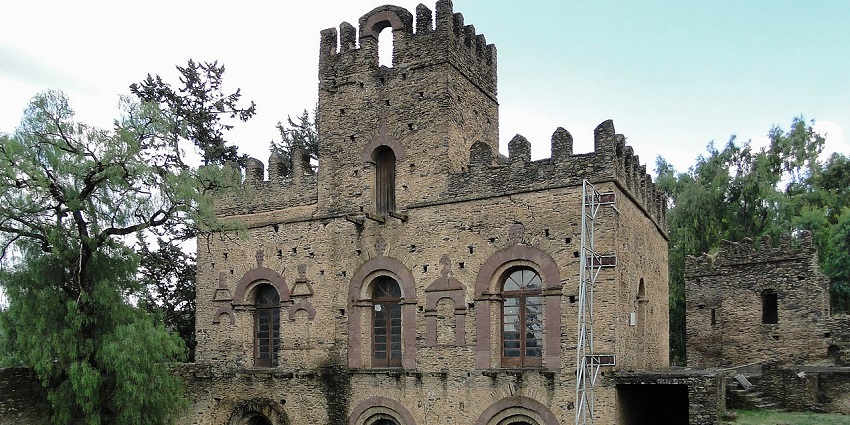
Photo: Bernard Gagnon / Wikimedia Commons
Qusquam Palace is for those interested in royal history. This was the private residence of Empress Mentewab, built during the early 18th century after the death of her husband, Emperor Bakaffa. She chose to establish her seat of influence here, separate from the official court at Fasil Ghebbi. The palace complex includes the remains of her stone residence, as well as Qusquam Maryam Church, which holds her tomb alongside the tombs of her son and grandson. Much of the structure has aged, but the layout is easy to follow.
Location: Qusquam, western Gondar
Cost: 50 ETB / ₹30
Nearby Attractions: Fasilides Bath, Royal Enclosure
7. Experience Gondar Market
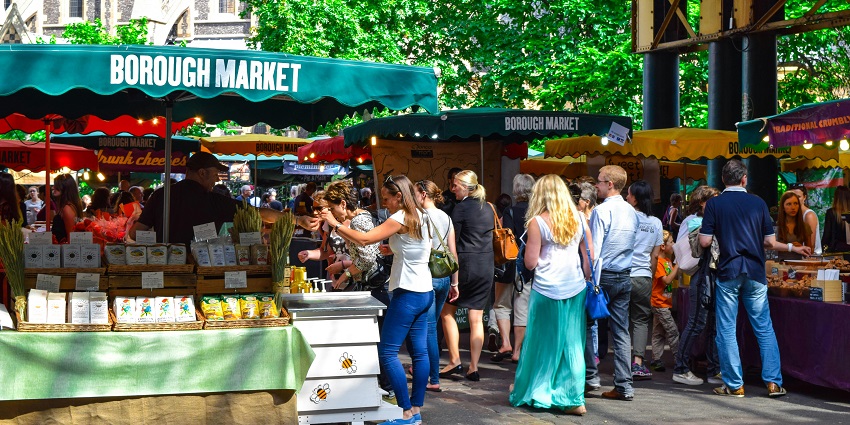
Photo: Mark Dalton / Pexels / Image For Representation Only
Spending time at Gondar Market gives you a clear picture of how trade shapes daily life. The busiest day is Saturday, when farmers and traders arrive early from nearby areas, carrying produce and goods packed in woven sacks and large baskets. Stalls are arranged by type, like grains in one area, woven baskets in another, and second-hand clothing spread out on mats nearby. The produce section is full of colour and movement, with tomatoes, chillies, herbs, and garlic sold in measured piles. Spices are sold loose, and local coffee beans are available either raw or roasted.
Location: City centre
Nearby Attractions: Piazza area, local cafes
8. Tour The Ras Gimb Palace Museum
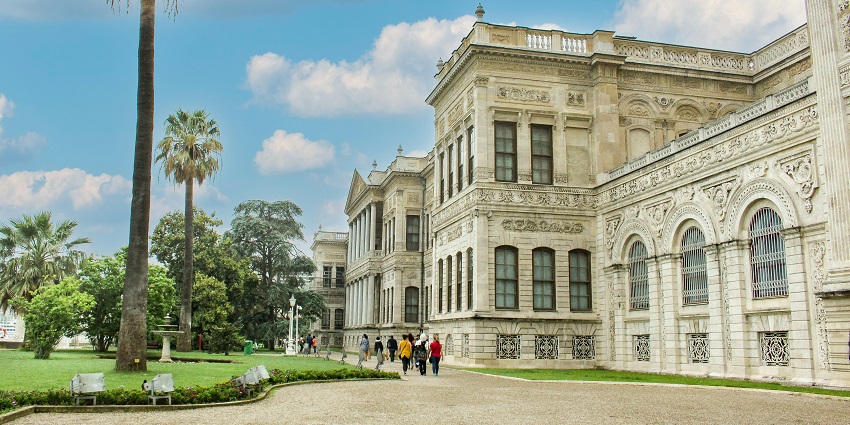
Photo: Ricky LK / Unsplash / Image For Representation Only
Ras Gimb Palace is one of the more informative stops, particularly for learning about the city’s political past. It was once home to Ras Mikael Sehul, a major political figure in the 18th century who controlled key decisions during a period of internal power struggles. The structure was built with solid stone walls and broad arches and has since been turned into a museum. Inside, you’ll find royal furniture, handwritten texts, weapons used in court settings, and clothing worn by members of the royal household. Written explanations near the exhibits describe the items and the people they belonged to.
Location: Within the Fasil Ghebbi compound
Nearby Attractions: Fasilides Bath, Debre Berhan Selassie Church
9. Attend Timkat Festival
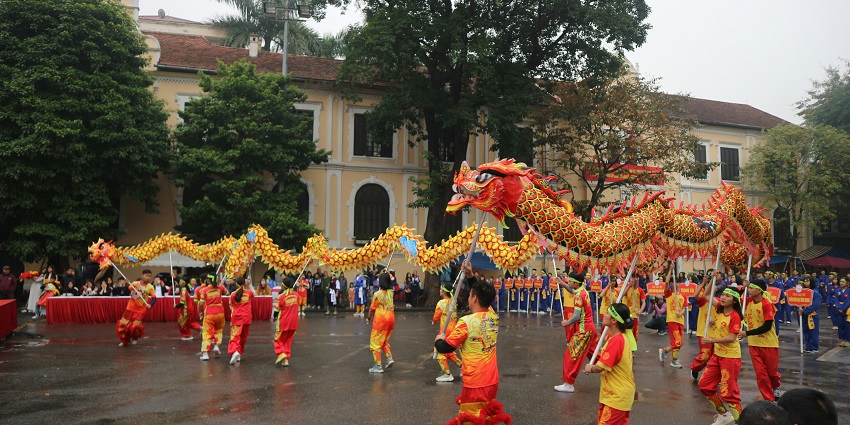
Photo: Rizki Oceano / Unsplash / Image For Representation Only
If you are visiting in mid-January, attending the Timkat celebration is one of the most unforgettable things to do in Gondar. The festival, held annually to mark Epiphany, lasts for three days and centres around a full re-enactment of Christ’s baptism. Fasilides’ Bath becomes the main site for this event. Clergy in ceremonial robes carry replicas of the Ark of the Covenant from local churches to the pool, accompanied by chants, drums, and dancing. The pool, usually dry, is filled with water in advance. On the second morning, priests bless the water before some members of the crowd enter the pool, taking part in the ritual as a symbol of spiritual renewal.
Location: Fasilides Bath and nearby streets
Nearby Attractions: Royal Enclosure, local churches
10. Visit The Wolleka Falasha Village
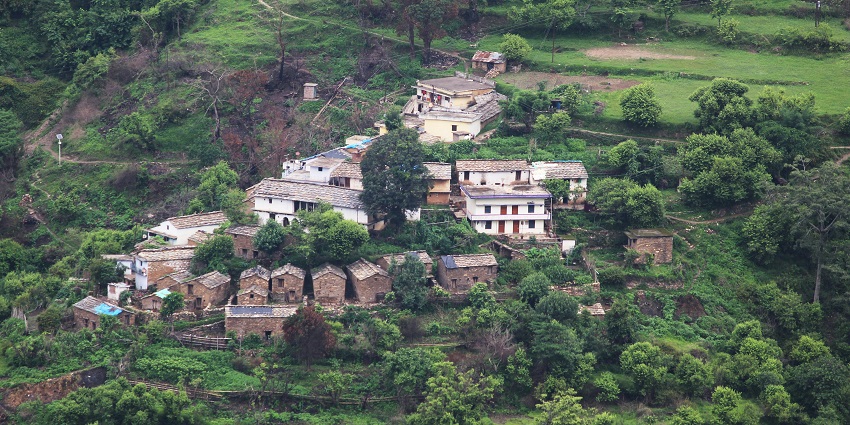
Photo: Ajay Kumar Jana / Unsplash / Image For Representation Only
Wolleka was once settled by Beta Israel, Ethiopia’s Jewish community. Although most families left in the late 20th century, signs of their presence remain. The village layout, the synagogue structure, and pottery work still reflect how the community lived and built their surroundings. The original clay houses, though weathered, still stand in rows. A former synagogue sits back from the road, its doorway carved with a Star of David. Some of the old burial grounds can still be seen on the edge of the village.
Location: 6 km north of Gondar
Nearby Attractions: Simien Mountains route, Kosoye Viewpoint
Choosing what to see in Gondar is easy when every site tells a piece of Ethiopia’s imperial story. Explore Fasil Ghebbi’s stone castles and the vibrant murals at Debre Berhan Selassie Church. Wander through lively markets, join local festivals like Timkat, or hike nearby trails. Gondar blends royal history with living tradition. For a trip that captures it all, plan your journey with TripXL.
Cover Photo: Ian Karuhanga / Unsplash / Image For Representation Only


 WhatsApp
WhatsApp
 Twitter
Twitter
